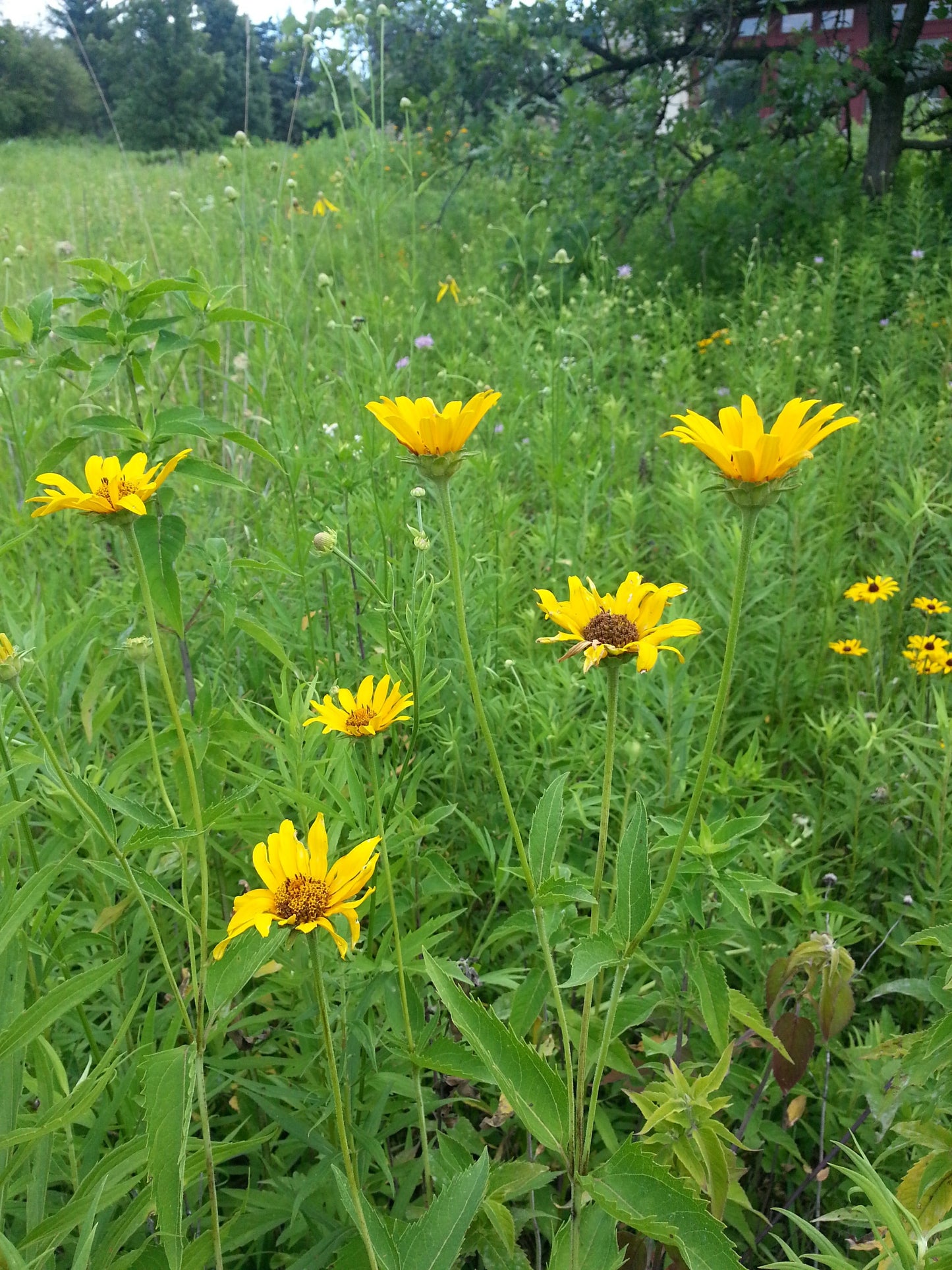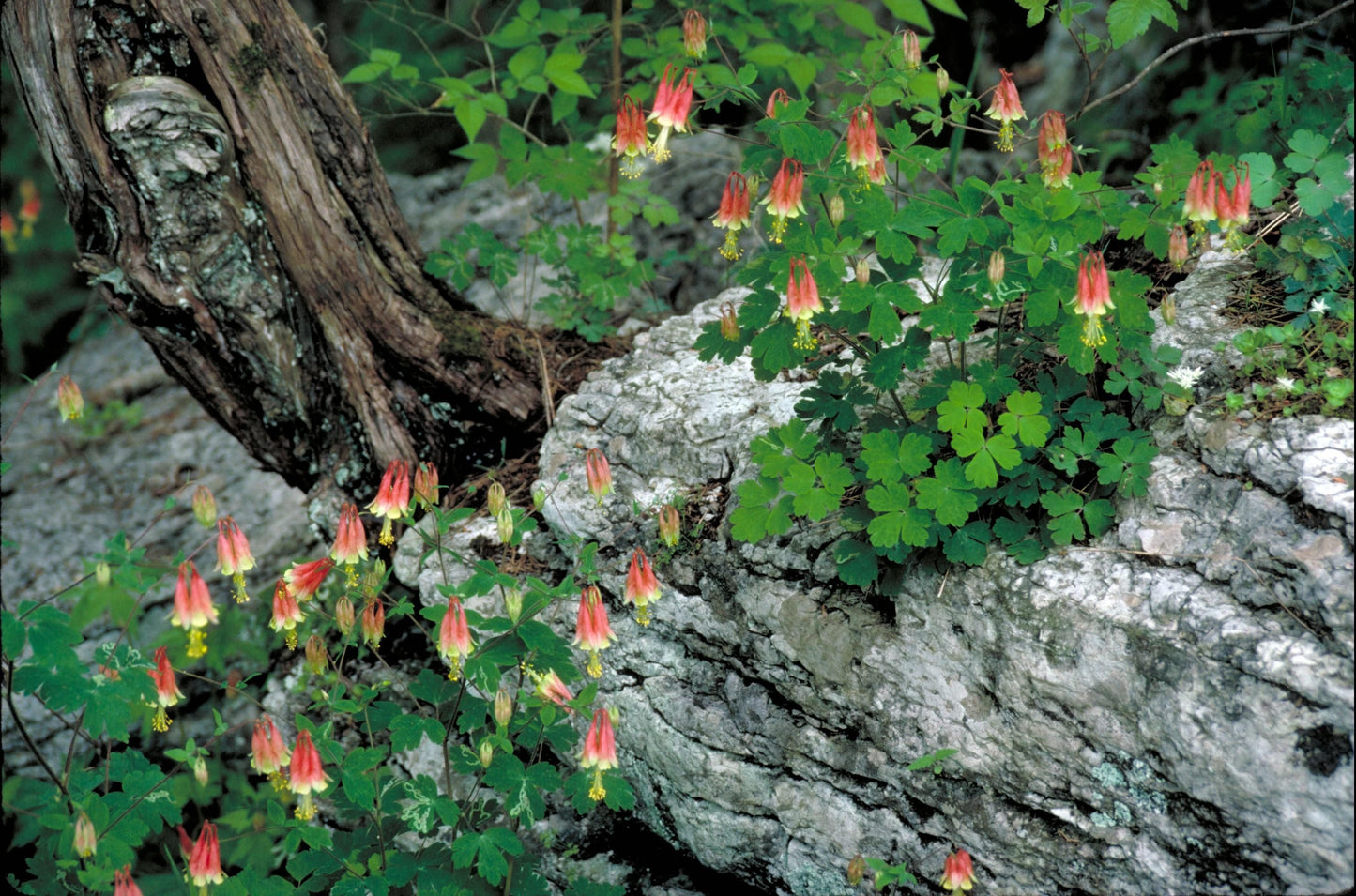Savanna & Woodland Native Seed Mix
Savanna & Woodland Native Seed Mix
Pure Live Seed
Pure Live Seed
Seed is provided in Pure Live Seed (PLS) unless otherwise stated.
Pure Live Seed (PLS) refers to the percentage of a seed lot that consists of the desired species and is viable (capable of germination).
Here's why PLS is crucial for native seeds:
-
Accurate Planting:
- PLS helps determine the actual number of viable seeds in a given weight or volume of seed.
- This ensures you plant the correct amount of seed to achieve the desired density and success rate.
-
Cost-Effectiveness:
- By knowing the PLS, you can avoid overspending on seed that may not germinate.
- This is especially important for native seeds, which can be more expensive than some cultivated varieties.
-
Weed Control:
- PLS helps minimize the presence of weed seeds within the seed lot.
- This reduces competition for resources and ensures the successful establishment of the desired native plants.
-
Ecological Restoration:
- Using high-quality native seeds with a high PLS is essential for successful ecological restoration projects.
- It helps to re-establish diverse and resilient plant communities that support local wildlife.
Couldn't load pickup availability
This part sun mix took inspiration from the oak savannas and open woodlands that surround the Midwest. Specifically designed for installation at the onset of restoration and also for overseeding of sunny woodlands that need a little bit of help, this mix contains some of the native species that begin and continue the healing process and provide competition for the dreaded buckthorn and other invasive plants, with a little bit of diversity added for functionality and aesthetics. If you have high weed pressures from recently removed invasive woody and/or herbaceous species consider doubling the seeding rate to help compete against the invasive species.
We would love to include Carex pensylvanica (Common Oak Sedge or Pennsylvania sedge) in the seed mix however, it does not typically produce enough seed for us to sell commercially. It is critically important to Midwest woodlands! You can read about it at the aforementioned link. Please consider adding several flats to your order.
This mix has 50% forb by seed count so you can attract those wonderful butterflies, bees, and pollinators! It also contains 11.5% sedges and rushes and 38% grasses.
*This seed mix contains 36 species including 26 species of wildflowers, 8 species of grasses, and 2 species of sedge.
The species contained in this mix are certainly the backbone of woodland wildflowers and critical to restoration efforts. However, certain native woodland plants can be very challenging to establish from seed and can take a lot of time to develop. To establish these hard to germinate beauties it is recommended that this mix is augmented with a diverse mix of woodland flowers, sedges, and grasses through supplemental plantings. Also, remember that most folks overestimate the amount of light they receive. If you believe that you are on the shadier side of things, also consider augmenting with more shade-tolerant woodland plants to fill out that end of the light spectrum. These supplemental woodland ephemeral flowers, grasses, and sedges are found by clicking here.
- Apply for a wholesale account to receive your wholesale discount.
- Please Specify Any Mixing Instructions Upon Order
- Requires Cold Moist Stratification
- Mostly Sunny To Partly Shade
- Wet-Mesic to Dry-Mesic Soils
- Don't forget the cover crop.
*Provided as Pure Live Seed
*All mixes may vary in % composition and species composition based upon availability.
All seed sales are final and can not be returned because they are custom mixed at the time of purchase.
Seed
Shipping & Care
Shipping & Care
Seed ships all year and typically ships within a week of an order being placed.
We have attempted to put together some basic information regarding native seed installation, establishment, and maintenance. We hope you find it helpful. If you need further assistance on native seed establishment, please schedule a free consolation call here.
Consultation Services
Ecosystem Restoration Considerations
Native Seed Establishment Best Management Practices
Native Seed Stratification Best Management Practices


Savanna & Sunny Woodland Native Seed Mix Specifications
Seeding Rate: 14.1 lb/acre (81.5 seeds/square foot)
| Common Name | Scientific Name | % of Mix | Seeds/ft2 | Total | ||
| Grasses | ||||||
| Sideoats Grama | Bouteloua curtipendula | 15.07% | 4.7 | 2.125 | PLS lb | |
| Canada Wild Rye | Elymus canadensis | 21.28% | 5.7 | 3.000 | PLS lb | |
| Silky Wild Rye | Elymus villosus | 7.09% | 2.0 | 1.000 | PLS lb | |
| Virginia Wild Rye | Elymus virginicus | 21.28% | 4.6 | 3.000 | PLS lb | |
| Fowl Manna Grass | Glyceria striata | 0.60% | 5.0 | 0.084 | PLS lb | |
| Bottlebrush Grass | Elymus hystrix | 3.55% | 0.6 | 0.500 | PLS lb | |
| Path Rush | Juncus tenuis | 0.11% | 5.7 | 0.016 | PLS lb | |
| Little Bluestem | Schizachyrium scoparium | 2.66% | 2.1 | 0.375 | PLS lb | |
| Sedges & Rushes | ||||||
| Plains Oval Sedge | Carex brevior | 3.97% | 6.0 | 0.560 | PLS lb | |
| Long-beaked Sedge | Carex sprengelii | 3.12% | 1.6 | 0.440 | PLS lb | |
| Forbs | ||||||
| Common Yarrow | Achillea millefolium | 0.28% | 2.6 | 0.040 | PLS lb | |
| Anise Hyssop | Agastache foeniculum | 0.99% | 4.6 | 0.140 | PLS lb | |
| Wild Garlic | Allium canadense | 0.85% | 0.0 | 0.120 | PLS lb | |
| Nodding Onion | Allium cernuum | 0.71% | 0.3 | 0.100 | PLS lb | |
| Tall Thimbleweed | Anemone virginiana | 0.14% | 0.2 | 0.020 | PLS lb | |
| Wild Columbine | Aquilegia canadensis | 0.28% | 0.6 | 0.040 | PLS lb | |
| Common Milkweed | Asclepias syriaca | 1.13% | 0.2 | 0.160 | PLS lb | |
| Calico Aster | Symphyotrichum lateriflorum | 0.07% | 0.9 | 0.010 | PLS lb | |
| Panicled Aster | Symphyotrichum lanceolatum | 0.07% | 0.6 | 0.010 | PLS lb | |
| Tall Bellflower | Campanula americana | 0.07% | 0.6 | 0.010 | PLS lb | |
| Tall Coreopsis | Coreopsis tripteris | 0.57% | 0.4 | 0.080 | PLS lb | |
| Purple Coneflower | Echinacea purpurea | 3.40% | 1.2 | 0.480 | PLS lb | |
| Sweet Joe Pye Weed | Eutrochium purpureum | 1.13% | 2.5 | 0.160 | PLS lb | |
| Ox-eye Sunflower | Heliopsis helianthoides | 3.55% | 1.2 | 0.500 | PLS lb | |
| Stiff Sunflower | Helianthus pauciflorus | 0.07% | 0.0 | 0.010 | PLS lb | |
| False Boneset | Brickellia eupatorioides | 0.28% | 0.5 | 0.040 | PLS lb | |
| Wild Bergamot | Monarda fistulosa | 1.42% | 5.1 | 0.200 | PLS lb | |
| Sweet Cicely | Osmorhiza claytonii | 0.28% | 0.0 | 0.040 | PLS lb | |
| Foxglove Beardtongue | Penstemon digitalis | 0.85% | 5.7 | 0.120 | PLS lb | |
| Solomon's Seal | Polygonatum biflorum | 0.28% | 0.0 | 0.040 | PLS lb | |
| Black-eyed Susan | Rudbeckia hirta | 1.12% | 5.3 | 0.158 | PLS lb | |
| Late Figwort | Scrophularia marilandica | 0.43% | 3.7 | 0.060 | PLS lb | |
| Solomon's Plume | Maianthemum racemosum | 0.85% | 0.0 | 0.120 | PLS lb | |
| Ohio Spiderwort | Tradescantia ohiensis | 0.85% | 0.4 | 0.120 | PLS lb | |
| Culver's Root | Veronicastrum virginicum | 0.14% | 5.9 | 0.020 | PLS lb | |
| Golden Alexanders | Zizia aurea | 1.42% | 0.8 | 0.200 | PLS lb | |
Substitutions may be necessary based on availability at the time of order.
Questions & Answers
Have a Question?
-
how deer resistant is this mix
That is an excellent question for a native seed mix. I wish we could give a definitive answer but it really depends on how much deer pressure you have and the populations and they're available food sources in your area. For example I have a lot of deer pressure and I have used this native woodland mix and definitely have had success with it, but the deer are definitely eating certain species within it. Deer tend to avoid mints, allium, grasses, sedges, Virginia Blue bells, milkweed, And black-eyed susans. They definitely eat purple coneflowers but usually some will survive especially if they get into the flowering stage when the seeds are a bit spiky. It goes the same for several other species in there, usually a few are able to make their way through. If you have high dear pressure I would suggest augmenting this mix with Virginia Blue bells because they in my experience have totally avoided those and they are quite beautiful. So overall you will have things that will succeed in here, but there are some that they will eat as well.
If you care to discuss this more we have a free consultation sign up on the front page of our website and we would be happy to discuss more.
Thanks!


